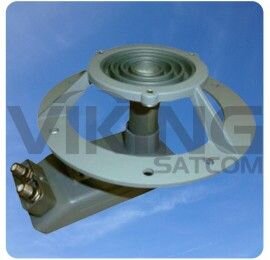When a KU LNBF designed for illuminating a FD .5 - .6 offset dish is mounted on a prime focus dish (FD .32 - .44 typical), the LNBF is only illuminating a portion of the reflector. If the LNBF is only receiving the signals reflected from an area that is equivalent to a 1M dish, then the less efficient surface combined with the shadow from the feedhorn (or LNBF) will produce much less signal gain than an offset 90cm. A petal, prime focus dish will have reduced accuracy, efficiency and performance than a similar surface area offset design.
Mount a feedhorn with KU LNB (or a KU LNBF) that is designed to illuminate a FD .32 - .44 reflector on a petal prime focus dish with corresponding FD and the entire surface area will be illuminated. The additional surface area will provide signal gains far in excess of that which is lost by reduced surface accuracy and the feedhorn shadow.




